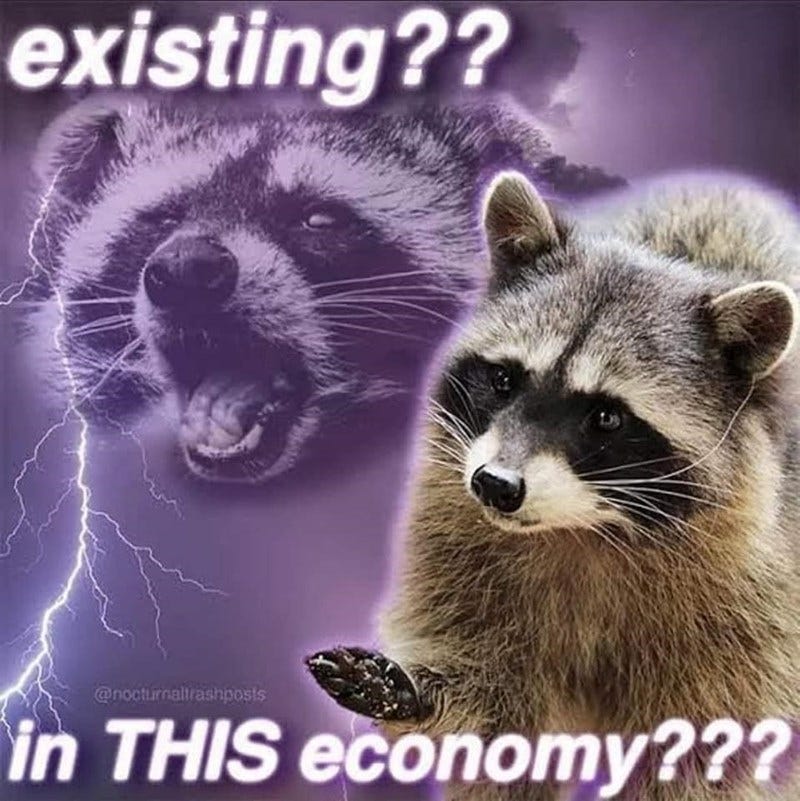🪂 Strap yourselves in folks, this one’s a long one.
By now, we’ve established that most businesses have one goal in common: to have products and services their customers love and can’t stop talking about.
We’ve gone over the value of social currency and the importance of leveraging triggers. The next factor that brands should pay attention to is ‘Emotions’.
Why? When people care, they share.
Think about all the videos that go viral on social media, like ‘Charlie Bit My Finger’. The video has been viewed over 50 million times, it’s literally a kid biting another kid’s finger. Why did so many people watch (and rewatch) this video? In fact, it’s not only viral but it’s also been hugely monetised as the YouTube video was sold as an NFT for - wait for it - $760999.
How did it reach this point where someone was willing to pay that amount of money to own the video as a token?
When viral videos go, well viral, it’s usually because they tap into some fundamental human emotions among viewers. There are 18 emotions at the root of viral video psychology (to be exact 🤓).
The video elicits a strong emotional response and when people care, they share. Sharing helps people form and deepen relationships. According to research from the Journal of Psychological Science, and perhaps unsurprisingly, our emotional responses to content can play a massive role in whether or not we choose to share that content with others. When readers experienced strong positive emotions, there were more likely to share the content, but they were also more likely to share content that evoked strong negative emotional states such as anxiety.
Emotions are important because humans are social animals, emotional sharing is a little bit like social glue, maintaining social relationships, even from a distance. (We all have friendships that are built on top-tier meme exchanges 👩🏼🤝👩🏽) If I see a hilarious racoon meme and laugh, I send it to one of my friends, knowing they’ll laugh. And even though we’re not laughing in the same room, at the same time, we’re still sharing that ‘moment’, and that connection deepens the friendship.
When people are excited, angry or anxious, they can’t help but share, so creating these emotions will encourage them to share and pass things along.
To infuse emotions along your customer journey, one key principle to focus on is the benefits you create for the user, not the specific product features, even if they’re incredibly advanced and technical.
When we’re selling or promoting a high-tech product we tend to assume focusing on the tech attributes will communicate the USP (Unique Selling Point, i.e. the differentiator). But we have to remember that people buy things not for reasons but for benefits.
Features focus on the technical aspects of the product. Take Samsung’s commercial for Galaxy A11. Very informative but solely feature-focused, not a lot of emotion.
Benefits focus on what these features enable users to do. This is where Apple excels. So compare a Samsung commercial to an Apple ad, instead of focusing on a set of high-tech security features, the commercial focuses on the underlying benefit - keeping your data safe. This creates feelings of comfort for those who already have an iPhone and feelings of anxiety for those without. (Since that ad, Samsung has dramatically upped their game.)
Benefits do a better job of evoking emotions because they address why people are buying the product or service. They tell users what this product will allow them to do. They speak to universal human needs like safety, such as in Uber’s ‘Vaccinate the Block’ campaign or love and togetherness as illustrated in Airbnb’s ads showing families bonding in country cabins and beach homes. Or adventure like in Airmalta’s commercial showing all the new memories you can make on your next holiday. These are far more emotionally charged than a list of features like free cancellation.
Be purposeful about when to infuse emotion across the customer journey by leveraging 3 strategies.
💗 1. Determine your emotional core
What are the right emotions to evoke and how can we build that emotional connection? One way to do this is to answer the 3 why’s (as outlined by Simon Sinek). Finding this emotional core will help you determine how best to showcase the emotional benefits of your offering rather than the technical features.
The 3 why’s begin with you answering the question - why does someone buy your product? Then, with the answer to this question, ask why again, then ask why to that answer as well, which gets you closer to the emotional core of your product.
Ok, I think I lost you - let’s get practical. Take Google search for example. If we ask the first why (1) '“Why does someone use Google search?”, we’ll probably get back a very basic answer - to find the information they want. And that answer isn’t wrong, it’s right! People do essentially want to find information, but that’s a far too simplistic and functional way to think about it. If we ask again, (2) “Why do people want to find the information they want to find?”, the answer might be that they want to figure out how to do something. (Throwback to me learning how to headstand in the pandemic 🤸♀️) Next, (3) “Why do they want to figure out how to do that thing?”, they may want to connect with loved ones, or achieve a goal or buy that big purchase they always wanted.
When we ask that second and third time, we often get closer to the emotional core. People aren’t using Google to find random data, they’re hoping to achieve a goal and use that data to help them get there.
Google ads leverage emotions to introduce new product features. Take its emotional masterclass in the Octopus story - an ad campaign showing how a father used Google to alleviate his son’s boredom and instil a love for learning, while also using the new augmented reality features along the way. But the features aren’t the focus of the story, the benefit is.
The next 2 strategies focus on what type of emotion you should try to incorporate across your customer journey.
Obviously, not all emotions cause the same level of adoption and advocacy. It’s not just the division between positive and negative emotions. It’s more complicated than that dichotomy and has to do with physical arousal. For instance, if you’re in the sea and you spot a big fish, you know it’s probably not a shark but you’re not completely sure either. You’re now in a state of high alert - your pulse has quickened, your blood is pumping, and you’re in fight or flight mode.
Whether positive or negative, these states drive us to act. This means anything from awe, excitement or humour to anger or anxiety across the spectrum. All of these cause a high-arousal physiological state and this can be powerful. For example, humour is a tried and tested strategy for brands to ensure that their campaign is impactful and remains memorable for audiences. This is why ‘Charlie Bit My Finger’ was so successful. It created a high-arousal response from its audience which causes people to share.
🗺️ 2. Find the existing high-arousal moments
The second strategy involves locating these moments in the user journey and encouraging users to share these moments.
Think about Calvin Klein’s ‘My Calvins’ campaign, all the moments along the customer journey from seeing the ad on a billboard or on social media, to them placing the order, to them receiving the packaging and unboxing their purchase. You can’t wait to wear them. Customers are already fired up so that’s a moment to encourage them to share, then why not send them an email reminding them to ‘flex’ on social with a post featuring their new Calvin set? (This also ties into Social Currency).
Or the Nike Run app, which leverages the most exciting part of your run - finishing it. Nike provides filters such as ‘Just do it Sundays’ that unlock exclusive stickers that runners can share this high-arousal experience with their run crew as their post-run photos and mention Nike in the process. This also opens up several opportunities for brands to integrate emerging technologies such as NFTs to supercharge customer engagement and loyalty programmes.
🎨 3. Create new high-arousal moments
Lastly, you can create new high-arousal moments along your customer journey. Take the McDonald x Monopoly collaboration, this content makes customers even more excited when their happy meal is handed to them, which makes it more likely for them to talk about it and share it with others. The contest has been around for over 30 years, the first year it was introduced it boosted sales by 40%. It’s now in 23 countries and billions of these Monopoly pieces have been produced. But, more importantly, tearing the Monopoly pieces off provides a new high-arousal touchpoint. Customers have an additional moment of excitement and surprises along their journey, encouraging them to share the moment.
By taking advantage of those exciting moments and building new ones, brands can generate more arousal and encourage more action.
There are a few key takeaways when building emotion into your brand strategy:
🔑 Emotion drives action - caring leads to sharing, to spur advocacy and adoption we have to make people care.
🔑 Benefits trump features - we need to make people feel something and build that emotional core.
🔑 Dial up the emotions - to drive word of mouth, don’t use any emotions, but channel high-arousal ones, positive or negative.
Thank you for tuning in to my newsletter! See you next tomorrow as we investigate one brand that leveraged emotion in one very successful campaign.
Have a contentful day 🌞
Emma








